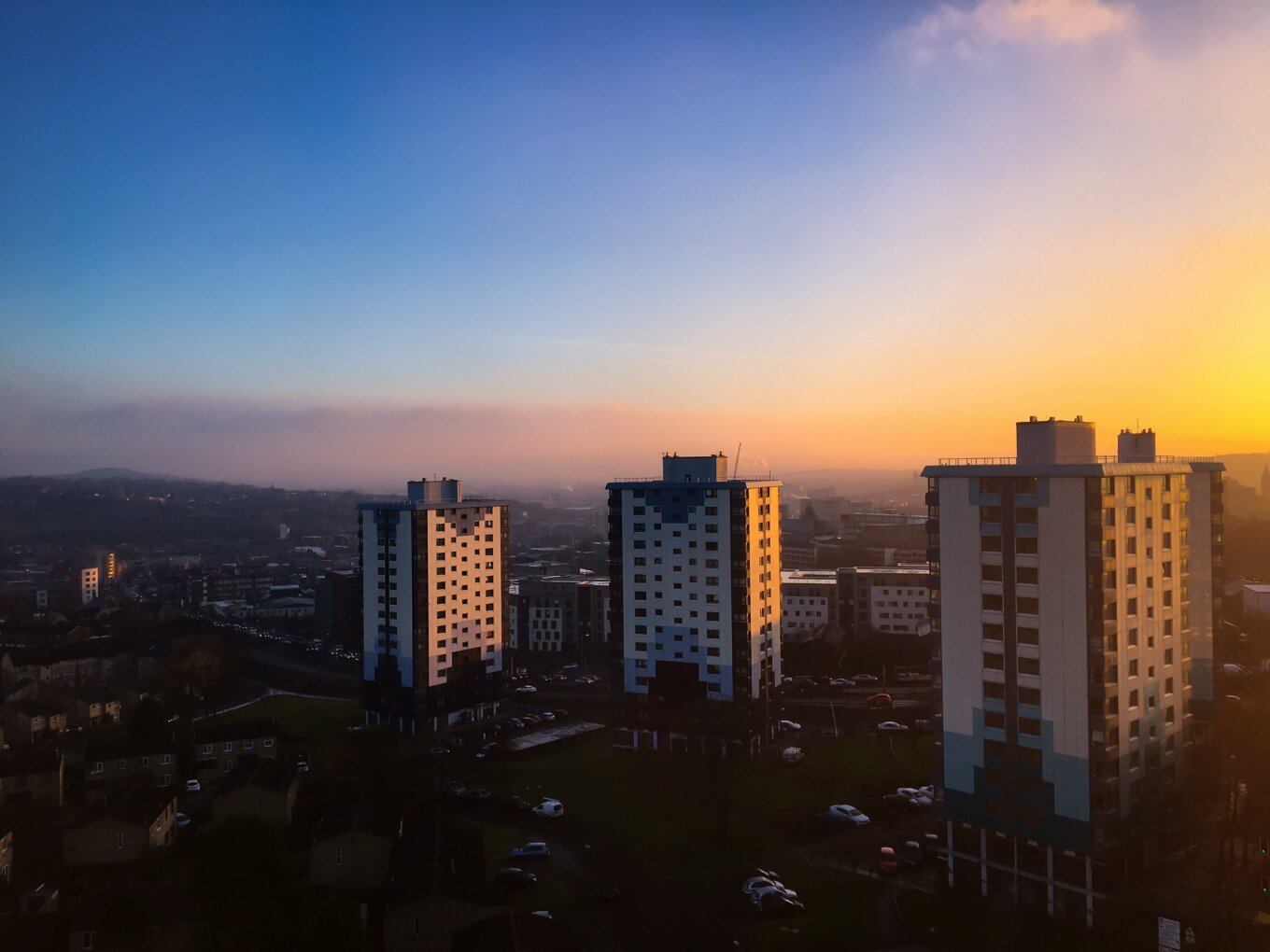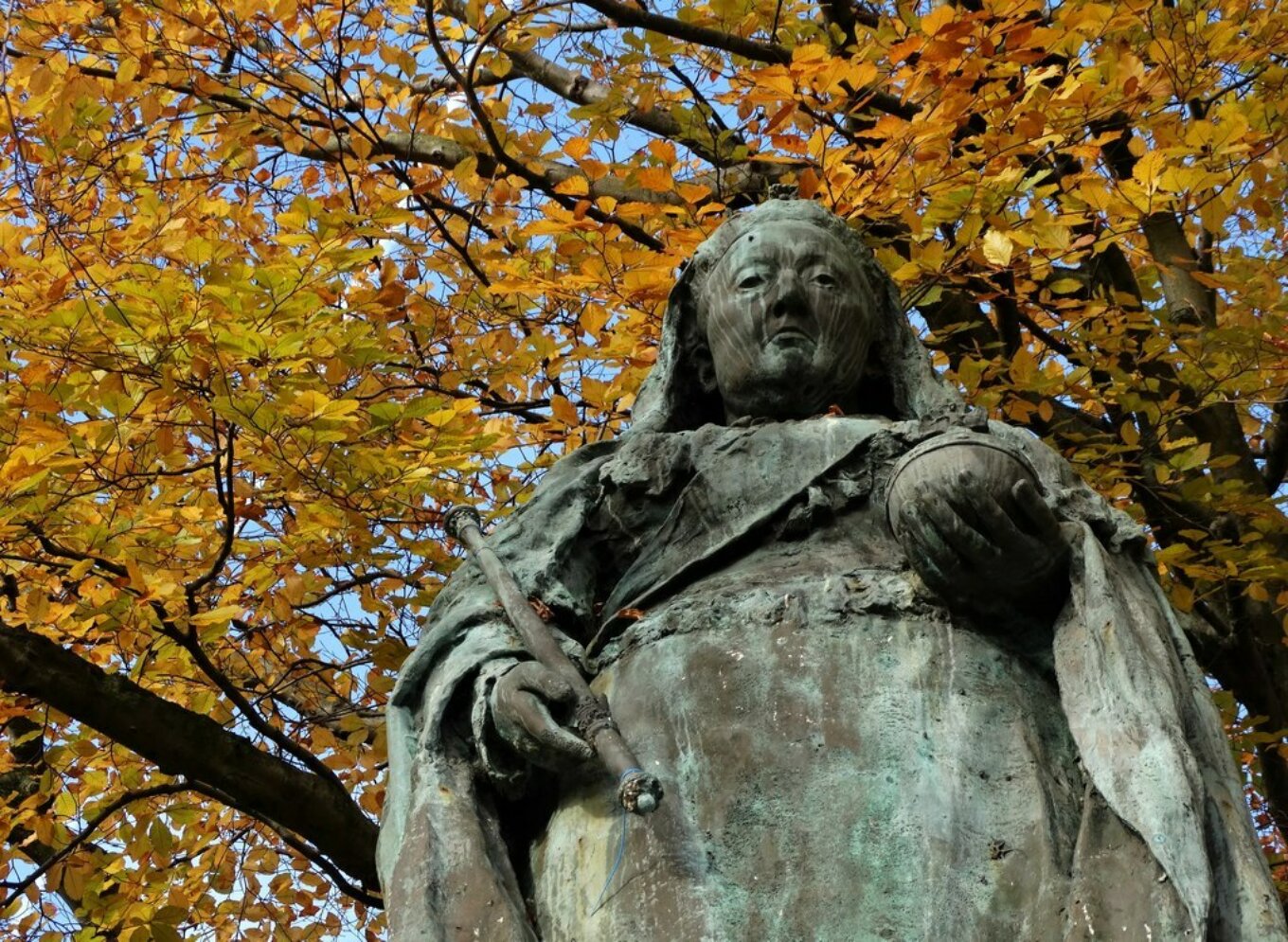A Council report shows Sheffield doesn't have many outwardly colonial statues or monuments — but the legacy of slavery and empire lives just below the surface.
by Shahed Ezaydi
5 AUGUST 2021

Gary Butterfield
In the past week, Sheffield City Council has published a report looking at the city’s history and heritage titled Sheffield: its history and heritage told through its streets, monuments, museums, libraries and archives. It aims to highlights parts of Sheffield that are indicative of a racist and colonial history — and what can be done to tackle this.
The publication is a direct result of last summer’s nationwide Black Lives Matter protests in the wake of the murder of George Floyd in the US and the subsequent toppling of the statue of Edward Colston in Bristol. Colston was a renowned slave trader and member of the Royal African Company, an organisation that had a monopoly on the West African slave trade in the late 1600s. In June 2020, after years of back and forth with local authorities over the appropriateness of the Colston statue, protesters pulled it down and dragged it into the harbour.
The toppling of the Colston statue reignited a national conversation around the figures and historical moments that the UK has memorialised in statues and monuments. It resulted in the development of a crowdfunded online tool, Topple the Racists, allowing people to input any monument they see as celebrating slavery, racism and colonialism. At the time of writing, no Sheffield statues have been inputted.
This renewed discussion led to Labour councils pledging to conduct reviews in their cities, and that they would “listen to and work with their local communities to review the appropriateness of local monuments and statues on public land and council property”. While Sheffield may not be seen as having any immediately obvious statues of a problematic nature, it was a Labour-run council in 2020, so it conducted a review and has now published the corresponding report.
What is Sheffield’s history and legacy when it comes to slavery?
Many people may be operating under the assumption that Sheffield doesn’t have a history associated with slavery. After all, it's well-known for its anti-slavery activities and abolitionism, in keeping with its identity as a radical, working-class city.
But like most cities, Sheffield does have a history of slavery. And because so much of the focus has been on anti-slavery, the city’s connections to the slave trade have been glossed over and effectively omitted from history.
Dr Rosie J Knight, a lecturer in American History at the University of Sheffield specialising in the history of slavery and lead on the Sheffield, Slavery, and its Legacies project, told me that it’s common to view “Britain’s part in the enslavement of African peoples as confined to the trafficking activities of seaboard cities like Liverpool and Bristol,” but that this is simply not the case.
“Between the seventeenth and the nineteenth centuries, Sheffield and the wider region — its manufacturers and businesses, families and individuals — had many different kinds of connections to, and involvement in, the mass enslavement of African peoples in the Americas.”
In fact, manufacturers in Sheffield profited largely from selling their metalware in West Africa as part of the slave trade. These were manufactured goods that were also sold in North America, the Caribbean and Brazil, as well as being used within the slave trade itself.
WITHOUT THE FREE LABOUR OF MILLIONS OF PEOPLE, IT'S IMPOSSIBLE TO SEE WHAT THIS COUNTRY WOULD LOOK LIKE NOW
One example is the hoes used by slaves working on cotton and sugar plantations, made in Sheffield and shipped across to the Americas. The demand and sale of these goods significantly contributed to the industrial economy of Sheffield.
As well as manufacturing, the sugar industry can also be traced back to slavery. As payment for the metal goods being sent across to the Caribbean and Brazil, unrefined sugar grown by enslaved people was sent to Sheffield, which developed and stimulated the sugar refining industry in the city.
Désirée Reynolds, writer-in-residence at Sheffield Archives and a member of the Black Arts Collective, explains how slavery and colonialism is deeply embedded in the city, and just how uncomfortable people are facing these truths.
“Sheffield — priding itself on its sanctuary status and working-class roots — still finds it hard to believe that part of its fabric is woven into this history.
"If a mine owner invested in the trade and made money, he would’ve put that money into the buildings, transport and infrastructure of the city. Without the free labour of millions of people, it's impossible to see what this country would look like now.”
This is why anti-slavery and abolition are only a part of Sheffield’s history. According to Knight, “there’s much more to be learned about these connections, and the different ways the profits materially benefitted Sheffield. But an overly simplistic understanding of Sheffield as an ‘abolitionist’ city overlooks its inhabitants’ part in these historic injustices and the experiences of enslaved African peoples.”
In the past week, Sheffield City Council has published a report looking at the city’s history and heritage titled Sheffield: its history and heritage told through its streets, monuments, museums, libraries and archives. It aims to highlights parts of Sheffield that are indicative of a racist and colonial history — and what can be done to tackle this.
The publication is a direct result of last summer’s nationwide Black Lives Matter protests in the wake of the murder of George Floyd in the US and the subsequent toppling of the statue of Edward Colston in Bristol. Colston was a renowned slave trader and member of the Royal African Company, an organisation that had a monopoly on the West African slave trade in the late 1600s. In June 2020, after years of back and forth with local authorities over the appropriateness of the Colston statue, protesters pulled it down and dragged it into the harbour.
The toppling of the Colston statue reignited a national conversation around the figures and historical moments that the UK has memorialised in statues and monuments. It resulted in the development of a crowdfunded online tool, Topple the Racists, allowing people to input any monument they see as celebrating slavery, racism and colonialism. At the time of writing, no Sheffield statues have been inputted.
This renewed discussion led to Labour councils pledging to conduct reviews in their cities, and that they would “listen to and work with their local communities to review the appropriateness of local monuments and statues on public land and council property”. While Sheffield may not be seen as having any immediately obvious statues of a problematic nature, it was a Labour-run council in 2020, so it conducted a review and has now published the corresponding report.
What is Sheffield’s history and legacy when it comes to slavery?
Many people may be operating under the assumption that Sheffield doesn’t have a history associated with slavery. After all, it's well-known for its anti-slavery activities and abolitionism, in keeping with its identity as a radical, working-class city.
But like most cities, Sheffield does have a history of slavery. And because so much of the focus has been on anti-slavery, the city’s connections to the slave trade have been glossed over and effectively omitted from history.
Dr Rosie J Knight, a lecturer in American History at the University of Sheffield specialising in the history of slavery and lead on the Sheffield, Slavery, and its Legacies project, told me that it’s common to view “Britain’s part in the enslavement of African peoples as confined to the trafficking activities of seaboard cities like Liverpool and Bristol,” but that this is simply not the case.
“Between the seventeenth and the nineteenth centuries, Sheffield and the wider region — its manufacturers and businesses, families and individuals — had many different kinds of connections to, and involvement in, the mass enslavement of African peoples in the Americas.”
In fact, manufacturers in Sheffield profited largely from selling their metalware in West Africa as part of the slave trade. These were manufactured goods that were also sold in North America, the Caribbean and Brazil, as well as being used within the slave trade itself.
WITHOUT THE FREE LABOUR OF MILLIONS OF PEOPLE, IT'S IMPOSSIBLE TO SEE WHAT THIS COUNTRY WOULD LOOK LIKE NOW
One example is the hoes used by slaves working on cotton and sugar plantations, made in Sheffield and shipped across to the Americas. The demand and sale of these goods significantly contributed to the industrial economy of Sheffield.
As well as manufacturing, the sugar industry can also be traced back to slavery. As payment for the metal goods being sent across to the Caribbean and Brazil, unrefined sugar grown by enslaved people was sent to Sheffield, which developed and stimulated the sugar refining industry in the city.
Désirée Reynolds, writer-in-residence at Sheffield Archives and a member of the Black Arts Collective, explains how slavery and colonialism is deeply embedded in the city, and just how uncomfortable people are facing these truths.
“Sheffield — priding itself on its sanctuary status and working-class roots — still finds it hard to believe that part of its fabric is woven into this history.
"If a mine owner invested in the trade and made money, he would’ve put that money into the buildings, transport and infrastructure of the city. Without the free labour of millions of people, it's impossible to see what this country would look like now.”
This is why anti-slavery and abolition are only a part of Sheffield’s history. According to Knight, “there’s much more to be learned about these connections, and the different ways the profits materially benefitted Sheffield. But an overly simplistic understanding of Sheffield as an ‘abolitionist’ city overlooks its inhabitants’ part in these historic injustices and the experiences of enslaved African peoples.”

Queen Victoria statue in Endcliffe Park Neil Theasby
The findings of the Council’s cultural holdings report
In the report on Sheffield’s 'cultural holdings' — compiled by Council staff and representatives from Sheffield Museums, Sheffield Hallam University and the University of Sheffield — a number of findings have been acknowledged.
Firstly, it’s recognised that many street names in the city are rooted in racism and colonialism, with a comprehensive list included in the report. There are street names associated with people who advocated for or were actively involved in slavery, such as:
Canning Street - Named after former Prime Minister, George Canning, who campaigned against the freeing of slaves.
Dundas Road - Named after the former Home Secretary, Henry Dundas, who delayed the abolition of slavery in Britain.
Gladstone Road/Street - Named after former Prime Minister, William Ewart Gladstone, whose father was one of the world’s largest slave owners, receiving £90,000 in compensation on abolition.
Melbourne Avenue - Named after former Prime Minister, William Lamb, 2nd Viscount Melbourne, a strong supporter of slavery who called Britain's abolishment of slavery a "great folly".
Other street names listed in the report have strong associations with violent suppression (Cromwell Street), war and military campaigns (Trafalgar Road/Street) and the colonial empire (Kipling Road, Jamaica Street, Kingston Street). There is only one street, Windrush Way, which highlights an event in the city’s Black history, while there are a number of streets named after abolitionist campaigners (Clarkson Street, Pitt Close).
As for statues and monuments, the report states that “Sheffield does not seem to have any public statues that are overtly connected to slavery”, but that “there are few representations of and few memorials celebrating ethnically diverse figures, presenting an inadequate expression of the city's large and diverse population.” The report acknowledges the colonial roots of the city's Queen Victoria statue, "relegated" from the top of Fargate to Endcliffe Park in the 1930s.
The document also looks at Sheffield’s libraries, archives and public museum collections, noting that our libraries have integrated their previous ‘Black Collection’ into the general system and that they’ve begun to purchase more materials related to anti-racism and inequality.
The history of marginalised and racialised communities in Sheffield is under-represented in the city's archives. The report argues that this is likely due to the archives relying on local donations, and “the collection therefore reflects what has been given rather than a deliberately curated representative view of the city.”
As was to be expected when looking at the public collections in Sheffield’s museums, and similar to other cities, the report found that “Britain’s colonial history, racism and the legacy of slavery are woven throughout Sheffield’s collections.”
A NEW UNDERSTANDING OF THINGS LIKE MONUMENTS AND STREET NAMES, OR THE CITY’S HISTORY MORE BROADLY, WON’T TACKLE RACISM
Recommendations of the report
Based on the above findings, the report lists a number of recommendations for the Council over a five-year programme.
Firstly, the authors argue that there needs to be more of a focus on building meaningful relationships with different communities, so that the Council can become “an enabler of communities rather than provider to communities.”
The second recommendation is for the Council to adopt multiple approaches to address issues in the report, rather than a ‘one size fits all’ approach, even if some of the approaches are “tentative or unproven”.
Thirdly, the report says there’s a need for the development of a policy for how representation and naming of statues, monuments and street names is managed in the future. This is linked to the final recommendation, which is to bring communities in to be an active part of the process of making Sheffield into a more representative and diverse city.
What now?
As Knight points out, “a new understanding of things like monuments and street names, or the city’s history more broadly, won’t tackle racism,” but what it can do is to help challenge prevailing narratives and “encourage white Sheffielders in particular to reconsider the city’s identity and our/their own positionality.”
As mentioned in recent Race Equality Commission hearings, many of these recommendations will require Sheffield City Council to prioritise funding and resources in these areas - which they don’t have a good track record of doing.
Relying on people of colour to take on this work is simply adding to the problem. “It takes money and resources. It seems to me that the Council is happy for communities of colour to pay the blood price of helping fix the Council's wrongs. Our labour should not be the currency,” says Désirée Reynolds.
When asked about what needs to be done to platform the voices of marginalised and racialised communities in Sheffield, Reynolds suggests an annual equity audit and the use of mentor schemes and apprenticeships, so we can “look at what was promised and what was delivered. And what is yet to be delivered. Looking at who's not in the room.”
“One audit and one report doesn't mean we're done. It’s all about legacies and transformative practice.”

by Shahed Ezaydi
5 AUGUST 2021
www.shahedezaydi.co.uk
No comments:
Post a Comment